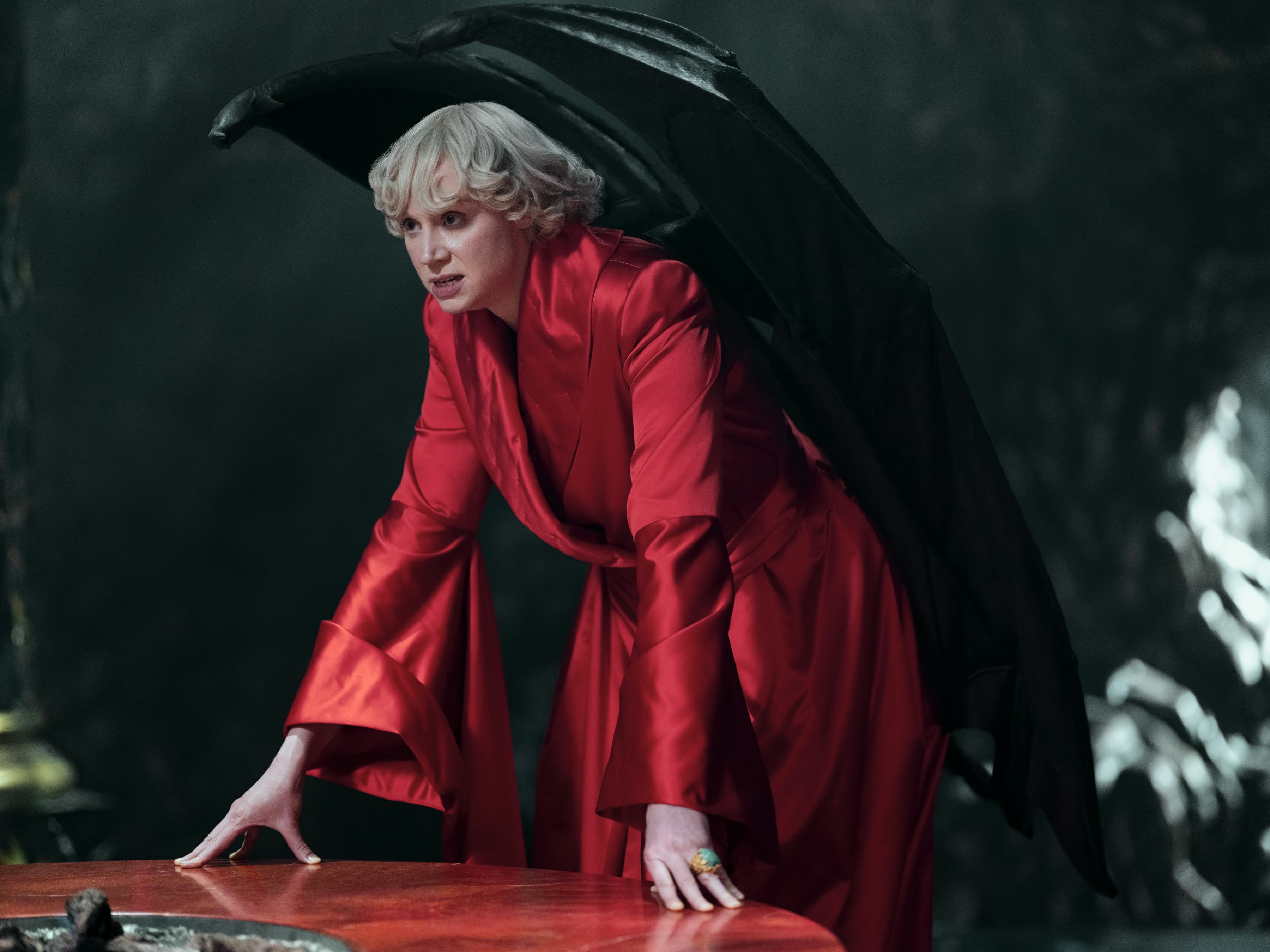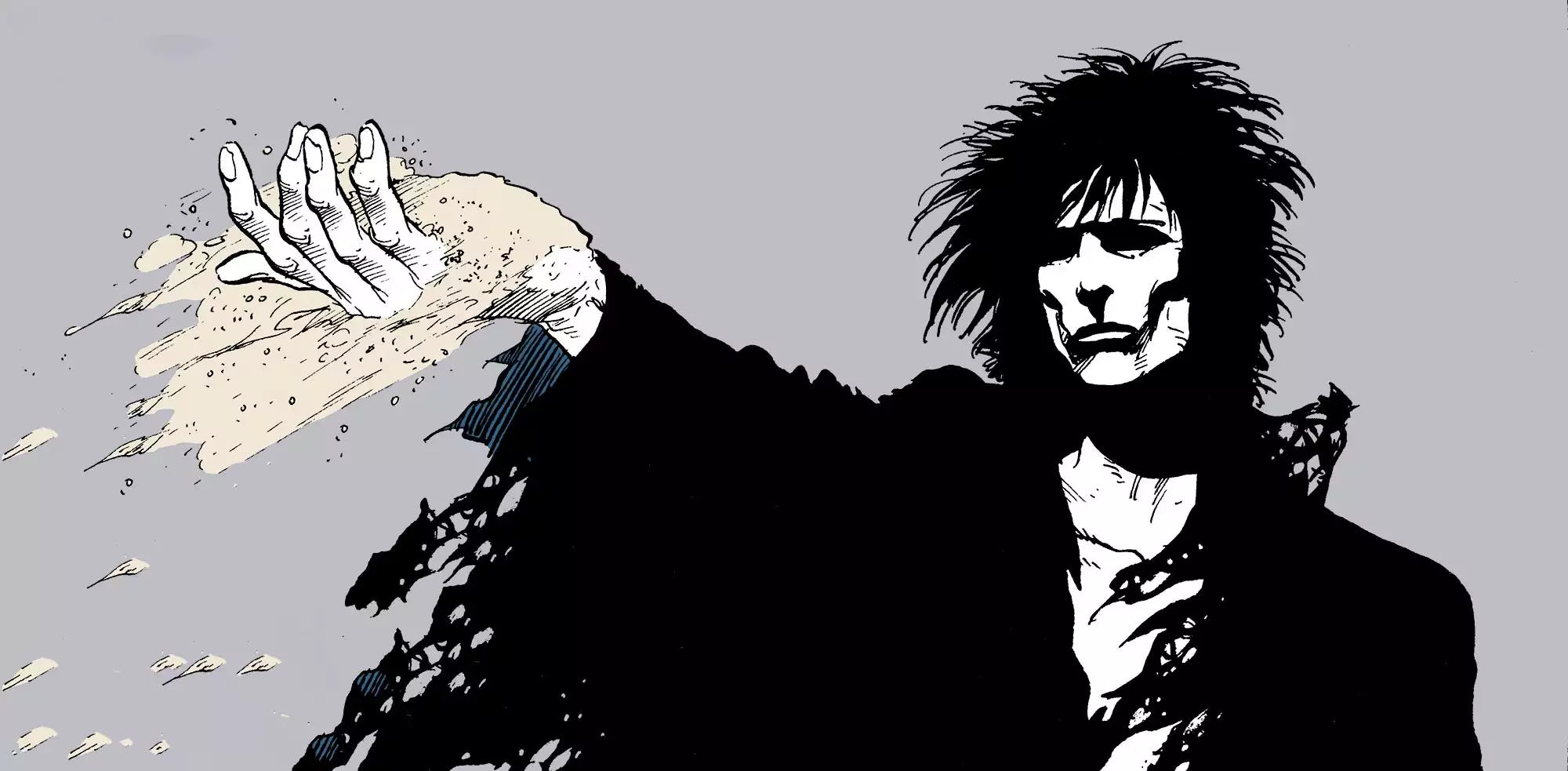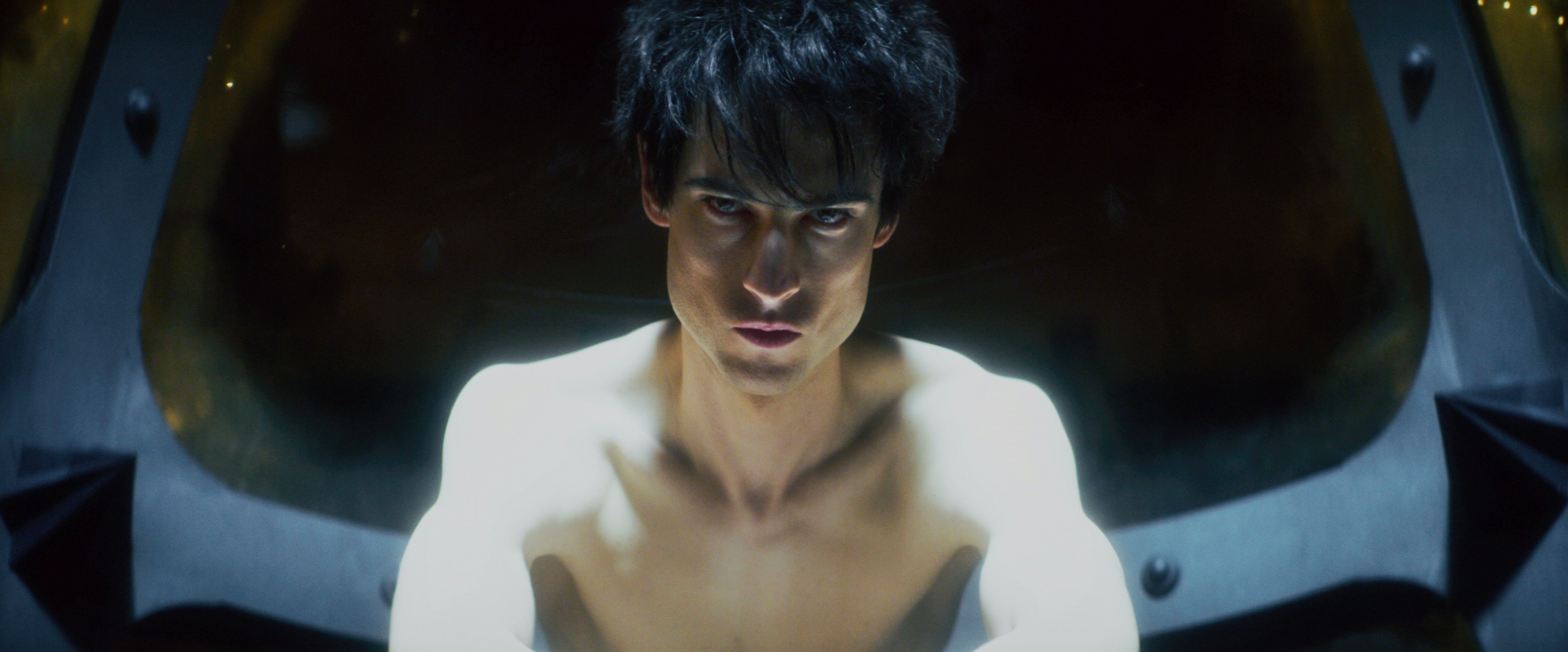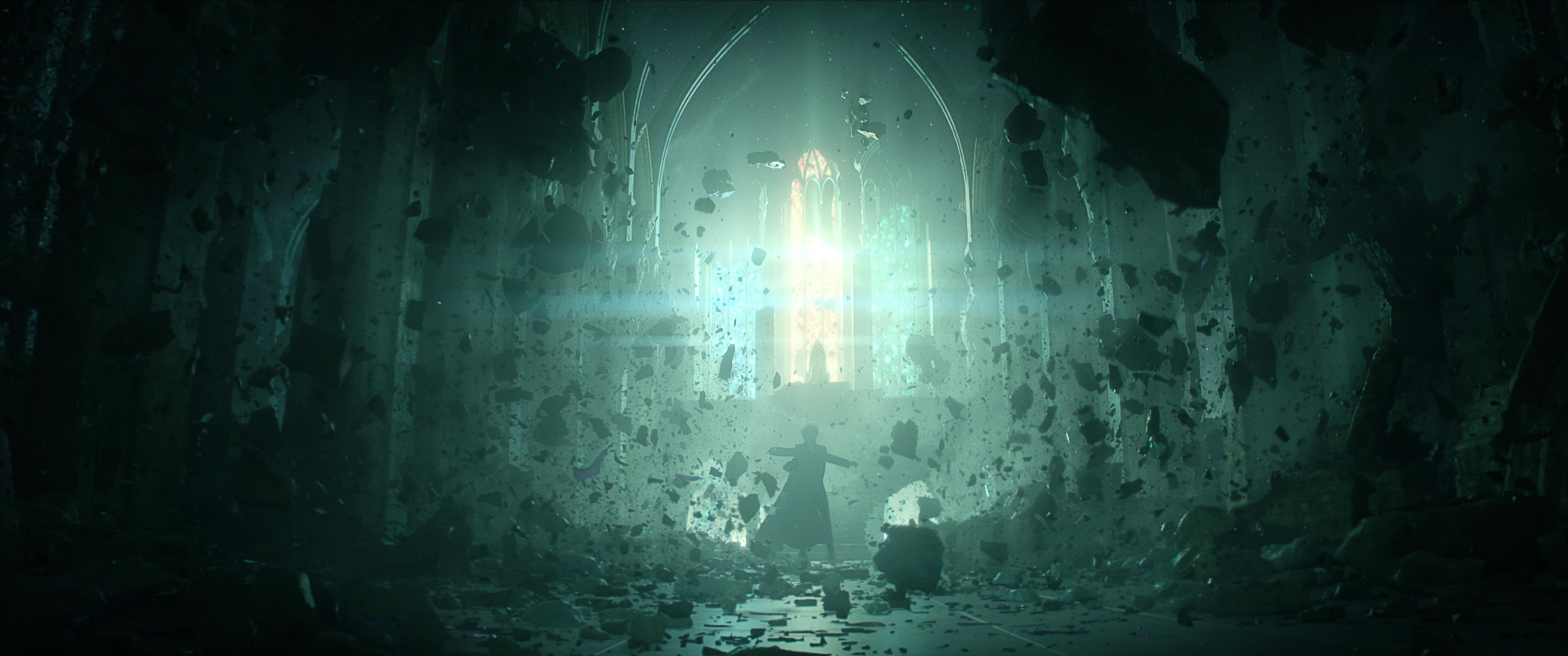
“What power have dreams in Hell?”
This provocative question posed by the most infamous Fallen Angel in theology to the King of Dreams is a real watershed moment in The Sandman, the beloved comics series from dark fantasy auteur Neil Gaiman. The philosophical weight of Morpheus’ response to Lucifer — “What power would Hell have if those imprisoned were not able to dream of Heaven?” — is felt throughout the rest of the series.
Three decades later, readers will finally get to see not only what power dreams have in Hell, but the power they have as they linger in the corners of our world long after we wake up and rub the sand from our eyes.
The Sandman, starring Tom Sturridge as the titular pale-faced, brooding dream-maker, debuted 10 episodes today on Netflix, meticulously adapting the first two volumes of Gaiman’s treasured and critically acclaimed graphic novel from page-to-screen.
Fans of the comics will not be disappointed. Dare we say it? Their dreams may have finally come true.
This may be one of the most faithful adaptations ever attempted by a streaming platform. Instead of taking “creative liberties” with its 26-Eisner-awards-winning source material, Neil Gaiman’s vision and narrative have been masterfully adapted. The devotion and care is palpable in the finished product.
Netflix’s The Sandman retells Volumes 1 and 2 of the comics — “Preludes & Nocturnes” and “The Doll’s House” — with only minor tweaks. It begins in the early 20th century, when Morpheus, Dream of the Endless (played by Sturridge), is captured by dark magic occultists and spends over a century trapped in The Waking World while his realm crumbled, allowing creatures from The Dreaming to run amok. Humans are then stricken with all sorts of odd sleep maladies.
When Morpheus finally breaks free, he must go on an epic quest across multiple dimensions to get his power back. Everyone involved in the show clearly has a great deal of passion for the style of fantastical dreams that make The Sandman one of the best graphic novels of all time.

Part-treasure hunt and part-noir, The Sandman explores dreamscapes both macabre and surrealist, culminating in a sweeping drama that spans across genres. And the variety of distinctive characters makes the show’s 10 episodes memorable and fun for most adult viewers, even the ones who have never even heard of the comics.
For fans of genre TV, it really is a can’t-miss — and if it gets enough audience attention to garner a sophomore season, it could become Netflix’s next big tentpole series on par with Stranger Things.
What dreams may come
While the core traits and story arcs that make the characters of The Sandman comics so memorable are kept intact here, casting for the Netflix show deviates a great deal from the source material, infusing the lineup with some much-needed diversity.
The cast is largely color-blind and gender-blind: Death is Black, Lucifer is a woman, John Constantine is gender-bent as Johanna Constantine, and more.

People will surely nitpick over this without understanding that, central to The Sandman comics is the belief that most of the abstract entities and omnipotent deities you see are subjective manifestations. In the cosmic sense, they’re either completely open to the interpretation of the viewer (and different depending on each viewer), or the outer appearance is a deliberate illusion chosen by these beings. In other words, they can choose how they appear in The Waking World — but their appearance may also be different depending on the observer.
As such, even though Death is depicted in the graphic novel as a pale, pop-punk princess, so long as her purpose and function are realized on Earth, it doesn’t matter what Death looks like on the show. Diversifying the comics’ original cohort of characters wasn’t only a prudent choice fit for modern times and modern viewers, but it also leans into the source material’s exploration of abstract concepts that are essentially formless.
The protagonist himself, Morpheus (also referred to as Dream of The Endless, Oneiros, and The Sandman throughout the show), looks like he leaped straight off the page. Tom Sturridge is pitch-perfect casting in every way. It was clearly a measured choice to keep the main character as recognizable as possible while experimenting with the rest of the ensemble. Sturridge not only looks the part, but he perfectly captures Morpheus’ cold arrogance and pride, as well as his more melancholy goth boy side. Bonus points for fans of The Sandman audiobook and James McAvoy’s take on Morpheus’ voice: Sturridge opted for a similar rumbling tenor.

The scene-stealers besides Sturridge himself are Gwendoline Christie as Lucifer Morningstar, Jenna Coleman as Johanna Constantine, Kirby Howell-Baptiste as Death, Asim Chaudhry as Abel, David Thewlis as Dr. John Dee, Stephen Fry as Gilbert/Fiddler’s Green, Mason Alexander Park as Desire, Charles Dance as Roderick Burgess, Patton Oswalt as Matthew the Raven, and Eddie Karanja as Jed Walker. Together, they comprise a captivating blend of British and American acting vets, most of whom have prior genre franchise experience, along with some up-and-coming stars.
Christie brings to Lucifer a bravado and boldness akin to her Game of Thrones character Brienne of Tarth (but with far more panache than the latter role ever allowed). Howell-Baptiste is the warmest and most welcome Grim Reaper ever to grace television. Chaudhry, Fry, and Oswalt provide much-needed levity and affability to balance out the dreary nature of Morpheus and some of the more grim tones at play.
A loving vision of dreams realized

Another facet that makes The Sandman largely unmissable is that Netflix knew how to wisely spend its rumored $15 million budget per episode. The visual and design effects, which include CGI, makeup artistry, prosthetics, and sets, are utterly spellbinding.
It truly looks as if Morpheus sprinkled his sand on the pages of the comics and made them come to life — a dream spilling into The Waking World (and onto our screens).
Details like The Corinthian’s (Boyd Holbrook) disturbing teeth-eyes, the damned dead that comprise the architectural foundation and topography of Hell, a British pub’s interior across eight centuries, and fuzzy dream companion Martin Tenbones, were some of the several standout effects that will undoubtedly enrapture viewers, transporting them to the many realms in The Sandman. The visuals are thrilling and rich, well worth their supposed price.
In sum, Netflix’s interpretation of The Sandman is superb because it masters a juggling act that most television and film adaptations struggle with: honoring characterization, thematic complexity, and weaving narratives, while also ensuring that it is accessible and comprehensible for existing and new fans alike.
The Sandman Season 1 is now on Netflix.







